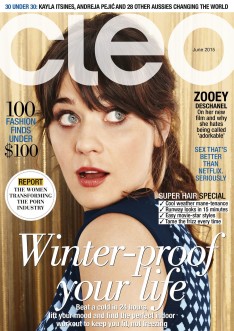‘Mistakes can happen’: Bauer’s stand-in CEO Andreas Schoo opens up on the future of Australia’s biggest magazine publisher
 Three months after the sudden resignation of Bauer Media CEO David Goodchild his interim replacement, and one of the publisher’s top global executives, Andreas Schoo sat down with Mumbrella’s Miranda Ward to discuss the future of Australia’s largest magazine publisher.
Three months after the sudden resignation of Bauer Media CEO David Goodchild his interim replacement, and one of the publisher’s top global executives, Andreas Schoo sat down with Mumbrella’s Miranda Ward to discuss the future of Australia’s largest magazine publisher.
Andreas Schoo’s entry into the Australian market was something of a baptism of fire – with news of the closure of much-loved magazine Cleo and the subsequent outpouring of grief pre-empting his arrival in the country by a matter of days.
The closure of Cleo – an icon of the Australian magazine space – capped a traumatic six months for the publisher which had lost its CEO David Goodchild, sales director Tony Kendall, and its most high-profile editor Helen McCabe, stirring considerable concern about its future in this market.
 With regard to the closure of Cleo, Schoo concedes the company underestimated the size of the public and media reaction to the news of the closure of a title launched by media industry doyenne Ita Buttrose and cemented into the mind of Aussies with the miniseries Paper Giants.
With regard to the closure of Cleo, Schoo concedes the company underestimated the size of the public and media reaction to the news of the closure of a title launched by media industry doyenne Ita Buttrose and cemented into the mind of Aussies with the miniseries Paper Giants.


Look at the graph above.
Did the management do anything when revenue fell from $180m to $140m in 2008/9?
Apparently now it is $57m. Boo hoo.
Ask ANY of the digital publishers if they could survive on $57m or even $50m!!!
D’ya think Mama Mia could manage?
I’d LOVE to look at their costs – how much for Executive salaries? CEO on a million, or more? CFO? How many “carpet-strollers” and what’s THEIR combined cost?
Premises: Still in CBD high rise at giant rents? How many Company Cars are there? Commodores? Mercedes? Audis? Cost?
These magazines have had their Palace of Versailles times. (What’s the annual credit card tally? Lunches at Oscars? Travel; first, business or economy?).
And don’t begin to tell me any of these buffoons “deserve it” because they have presided over the collapse of an empire.
I’ll bet they sacked a few workers and sent some rented pot plants back… (“good job, Smithers, shall we celebrate with Krug and Cohiba?”)
And riddle me this: if they had acted back in 2007 (or before) and made a decent digital option, would people have learned to pay for it? The Internet is free and now it is too late to start charging for it (Oh I know SOME will pay, but the masses in their millions?)
Here’s the deal, you go into Bauer you take them a great concept, show them how it could enhance what they do, advise them to go in a variety of directions…what do they do? They tell you that video is a spend, that there is no future in video and then they go and hire a bunch of hacks to do in house video and when the video doesn’t work because its poorly made they then say…see video is a spend there’s no profit ( national Geo anybody?). You’ve got magazine publishers treating everybody with suspicion and the level of infighting and arrogance in that company is off the chart. Everything is a threat and the culture of fear in that place stops anything new and interesting that would help get them out of the hole they are in….they simply do no GET IT and never will.
I cannot remember the last time I bought a printed magazine?
I can remember the last time I trawled Google Images and pinned photos to a variety of boards, (house, bathroom, holiday, wedding, work…). I can remember the last time I searched a hashtag on Instagram and scrolled. I can also remember the last time I liaised with a direct brand, by browsing their own website, or even liaising with them on Twitter or Insta. I can remember the last time I got a shout out by a famous person on Twitter or Insta too! (I didn’t have to send a letter / email to a third party magazine to achieved this…)
The above habits aside (which must be killing companies like Bauer), I agree with the comments above. Whilst being disrupted the old habits are not dying and the ‘ivory tower’ is still harbouring suits, who actually wear suits, (with ties; do you remember them!?).
Can Bauer be saved? Well they need to spread into a variety of other businesses. Publishing, as they know it, is over. I am not sure they can attract the talent they need though?
I have idea’s, but does anyone else have suggestions on how they could be saved?
Important to note that Bauer Media purchased ACP Magazines in Sep 2012, not 2007 as stated in the above.
Thanks Claudine, we’ve fixed the copy to make that more clear.
Cheers,
Miranda
@John Hollands.
1. The graph says media agency spend.
2. Therefore it doesn’t include any direct sales revenue.
3. Nor does it include cover price revenue.
Having said that I don’t disagree with your anguish and conclusion – just you poor analysis of partial data.
Ha! @Dutchy
Your points are well made – I WAS just going off the data supplied. (So?)
However, I quibble with your conclusion: I wasn’t analysing partial data so much as analysing dodgy and complacent Management.
My anguish has moved on to another topic.